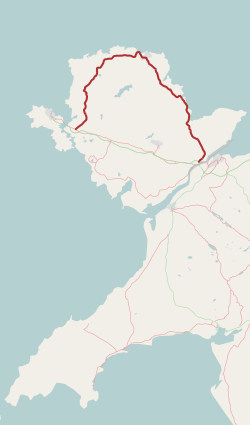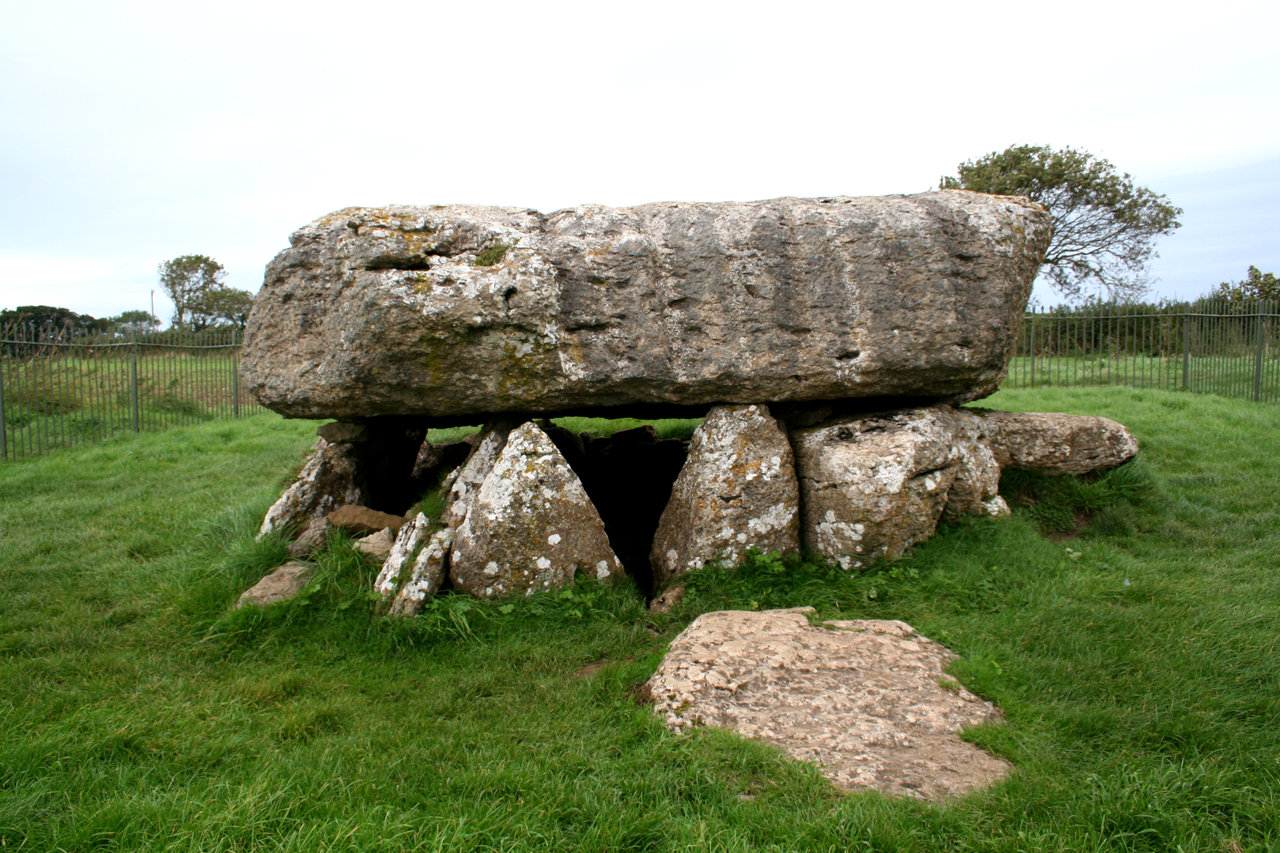|
Lligwy Bay
Lligwy Bay ( cy, Traeth Lligwy) is a bay of the Welsh island of Anglesey. It is on the north east of the island, to the north of the village of Moelfre. It was the site, in October 1859, of the loss of the steam clipper ''Royal Charter'' with a loss of life in excess of 450. The bay is very popular with windsurfers and other windpowered watersport enthusiasts. There is a pay and display car park at the end of the access road from the A5025 at Brynrefail. See also * Capel Lligwy * Din Lligwy * Lligwy Burial Chamber *Royal Charter Storm The ''Royal Charter'' Storm (also known as the Great storm of 1859) of 25 and 26 October 1859 was considered to be the most severe storm to hit the Irish Sea in the 19th century, [...More Info...] [...Related Items...] OR: [Wikipedia] [Google] [Baidu] |
Lligwy
Lligwy is an electoral ward on the northeast coast of Anglesey, Wales. It includes the communities Moelfre, Llaneugrad, Llanfair-Mathafarn-Eithaf (including the village of Benllech) and Pentraeth; and the electoral ward of Llanfihangel Tre'r Beirdd in the community of Llanddyfnan. Lligwy elects three county councillors to the Isle of Anglesey County Council. Lligwy was created following the Isle of Anglesey electoral boundary changes in 2012, which created 11 multi-councillor wards from 40 single-councillor wards. Prior to this Lligwy was covered by the Moelfre ward and parts of the Brynteg, Llanbedrgoch, Llanddyfnan and Pentraeth county wards which each elected their own county councillor. Since the May 2017 county elections, the ward has been represented by Plaid Cymru councillor Vaughan Hughes and two Independent Independent or Independents may refer to: Arts, entertainment, and media Artist groups * Independents (artist group), a group of modernist painters bas ... [...More Info...] [...Related Items...] OR: [Wikipedia] [Google] [Baidu] |
Wales
Wales ( cy, Cymru ) is a country that is part of the United Kingdom. It is bordered by England to the east, the Irish Sea to the north and west, the Celtic Sea to the south west and the Bristol Channel to the south. It had a population in 2021 of 3,107,500 and has a total area of . Wales has over of coastline and is largely mountainous with its higher peaks in the north and central areas, including Snowdon (), its highest summit. The country lies within the north temperate zone and has a changeable, maritime climate. The capital and largest city is Cardiff. Welsh national identity emerged among the Celtic Britons after the Roman withdrawal from Britain in the 5th century, and Wales was formed as a kingdom under Gruffydd ap Llywelyn in 1055. Wales is regarded as one of the Celtic nations. The conquest of Wales by Edward I of England was completed by 1283, though Owain Glyndŵr led the Welsh Revolt against English rule in the early 15th century, and briefly re-establis ... [...More Info...] [...Related Items...] OR: [Wikipedia] [Google] [Baidu] |
Anglesey
Anglesey (; cy, (Ynys) Môn ) is an island off the north-west coast of Wales. It forms a principal area known as the Isle of Anglesey, that includes Holy Island across the narrow Cymyran Strait and some islets and skerries. Anglesey island, at , is the largest in Wales, the seventh largest in Britain, largest in the Irish Sea and second most populous there after the Isle of Man. Isle of Anglesey County Council administers , with a 2011 census population of 69,751, including 13,659 on Holy Island. The Menai Strait to the mainland is spanned by the Menai Suspension Bridge, designed by Thomas Telford in 1826, and the Britannia Bridge, built in 1850 and replaced in 1980. The largest town is Holyhead on Holy Island, whose ferry service with Ireland handles over two million passengers a year. The next largest is Llangefni, the county council seat. From 1974 to 1996 Anglesey was part of Gwynedd. Most full-time residents are habitual Welsh speakers. The Welsh name Ynys M ... [...More Info...] [...Related Items...] OR: [Wikipedia] [Google] [Baidu] |
Moelfre, Anglesey
Moelfre () is a village, a community and, until 2012, an electoral ward on the north-east coast of the Isle of Anglesey in Wales. The community area covers the village and harbour, and several smaller, dispersed settlements. It includes six scheduled Iron Age hut groups and many other sites of archaeological interest. The harbour was formerly a local fishing port; a lifeboat station has been based here since 1854. Among many shipwrecks off the coast was that of the Royal Charter in 1859. Near the modernised lifeboat station is the RNLI Seawatch Centre. The coastline includes a rocky headland north of the village and a large sandy beach at Lligwy Bay, both traversed by the Anglesey Coastal Path. The 2011 census measured the village population as 710. It was estimated at 614 in 2019. Location The village of Moelfre wraps around a small harbour sheltered from the north by a substantial headland and the rocky island of Ynys Moelfre. Also within Moelfre Community are the more disper ... [...More Info...] [...Related Items...] OR: [Wikipedia] [Google] [Baidu] |
Royal Charter (ship)
The ''Royal Charter'' was a steam clipper which was wrecked off the beach of Porth Helaeth in Dulas Bay on the northeast coast of Anglesey, Wales on 26 October 1859. About 450 lives were lost, the highest death toll of any shipwreck on the Welsh coast. The precise number of dead is uncertain as the complete passenger list was lost in the wreck, although an incomplete list (not including those who boarded just before departure) is retained in the Victorian Archives Centre in Victoria, Australia. The ''Royal Charter'' was the most prominent among about 200 ships wrecked by the ''Royal Charter'' Storm. The ''Royal Charter'' was built at the Sandycroft Ironworks on the River Dee and was launched in 1855. She was a new type of ship, a 2,719-ton iron-hulled steam clipper, built in the same way as a clipper ship but with auxiliary coal-fired steam engines which could be used in the absence of suitable winds. The ship was used on the route from Liverpool to Australia, mainly as a ... [...More Info...] [...Related Items...] OR: [Wikipedia] [Google] [Baidu] |
A5025 Road
The A5025 is an 'A' road that runs from Llanfairpwllgwyngyll to Valley in Anglesey, Wales. A major road around the north coast of the isle, it runs up the east, north and finally north-west side of the island via several places including Benllech and Amlwch. In all the road is long. Description The A5025 begins at the A55 road, near Sant Tysilio Nursing Home on the northeastern outskirts of Llanfairpwllgwyngyll. It initially heads northeast but soon teeters northwest as its passes Pentraeth Motors. It continues northwest, passing through the town of Pentraeth itself, where it crosses the B5109 road, and then heads north through the coastal town of Benllech. The stretch of road in Benllech is known as Bangor Road. It heads northwest again, crossing the B5110 road, before briefly turning southwest at the junction with the A5108 road to the northeast of Llanallgo. After passing through Llanallgo it heads north-northwest through Brynrefail, Llaneuddog, and Penysarn. Northwe ... [...More Info...] [...Related Items...] OR: [Wikipedia] [Google] [Baidu] |
Brynrefail
Brynrefail () is a small village in north-east Anglesey, Wales. Location It is located in the civil parish of Moelfre on the A5025 between Amlwch and Benllech. Amenities As the settlement is very small it has very few amenities. Those it does have include a late 19th-century church, a craft shop/general store, a garden centre and a community hall which was opened in 1995. The island's only airsoft /paintball, OTT Airsoft Club, site is located close to the village and ''Tyddyn Mon'', a 'Learning Disability Wales' centre, is found in the village. The village is on bus route 62 which runs every half an hour between Bangor and Amlwch. It is the best stop for the beaches of Dulas Bay and Lligwy Bay (which are about 1.5 miles away) as well as the nearby camping and caravan sites. Four men from the village lost their lives in World War II World War II or the Second World War, often abbreviated as WWII or WW2, was a world war that lasted from 1939 to 194 ... [...More Info...] [...Related Items...] OR: [Wikipedia] [Google] [Baidu] |
Capel Lligwy
Capel Lligwy (sometimes referred to as Hen Gapel Lligwy) is a ruined chapel near Rhos Lligwy in Anglesey, north Wales, dating back to the first half of the 12th century. The chapel's original purpose is unknown, but it might have been used as a memorial chapel or in connection with a local royal court, or as a chapel of ease in a large parish with a growing population. It was used for a time until the early 18th century as a private place of worship for a nearby house, then later fell into disrepair. The walls still remain, with some traces of render on them internally, but there is no roof. It contains a 16th-century side chapel with a vault beneath, used as a burial chamber. It is a Grade II listed building, a national designation given to "buildings of special interest, which warrant every effort being made to preserve them", in particular because it is "a substantially 12th-century structure" with the "unusual 16th-century vaulted south chapel". History and location The ol ... [...More Info...] [...Related Items...] OR: [Wikipedia] [Google] [Baidu] |
Din Lligwy
Din Lligwy (or Din Llugwy) hut circle is an ancient village site near the east coast of Anglesey, close to the village of Moelfre, North Wales. Excavations in 1905–1907 produced hundreds of Roman-period pot sherds of the 3rd and 4th centuries CE, many repaired with iron clamps. Animal bones were found too, some made into tools and one into a musical instrument. The most important economic activity, however, appears to have been iron working, smithing and perhaps smelting. Despite the mainly Roman finds, the origins of the settlement may well go back into the Iron Age and it was probably a small farming community. From excavation, it seems that the round structures were probably houses and the rectangular ones barns or workshops. For a Roman site, much remains visible above ground, including the enclosing wall and the foundations of many buildings, many of them with substantial and well made foundations constructed from the local limestone. The outer protective wall is almos ... [...More Info...] [...Related Items...] OR: [Wikipedia] [Google] [Baidu] |
Lligwy Burial Chamber
Lligwy Burial Chamber is a Neolithic burial chamber in Lligwy, near the east coast of Anglesey, Wales, United Kingdom. It consists of a circle of upright stones, made into a low chamber by a very large roof slab estimated at 25 tonnes. Excavation in 1909 found the remains of some 15 to 30 people, and pottery suggesting a late Neolithic date. Close to the village of Moelfre, the site is within a few metres of the road, where there is room to leave a single car for short periods. Burial chamber Lligwy Burial Chamber is a very robust, neolithic chamber. The eight uprights which support the massive capstone are larger than they at first appear, because half of their height is buried in the ground. The capstone is about long and wide, with a thickness of around . It is estimated to weigh about and is in contact with only three of the uprights. A gap between the uprights on the eastern side probably indicates where an entrance passage stood, with a way out of the mound; It is uncle ... [...More Info...] [...Related Items...] OR: [Wikipedia] [Google] [Baidu] |
Royal Charter Storm
The ''Royal Charter'' Storm (also known as the Great storm of 1859) of 25 and 26 October 1859 was considered to be the most severe storm to hit the Irish Sea in the 19th century, with a total death toll estimated at over 800. It takes its name from the ''Royal Charter'' ship, which was driven by the storm onto the east coast of , Wales, with the loss of over 450 lives. The storm followed several days of unsettled weather. The first indications were seen in the |







.jpg)